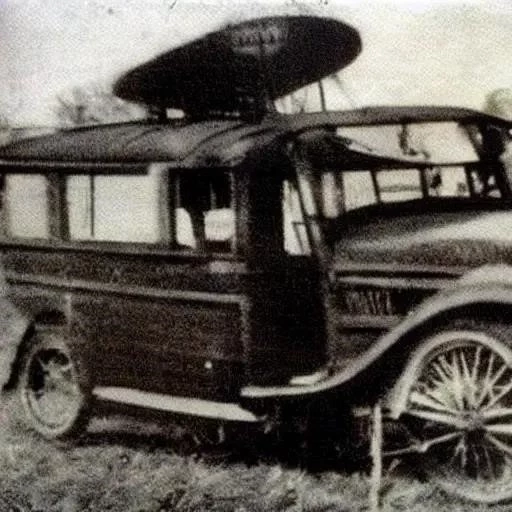In the relentless pursuit of automotive distinction and unparalleled power, some visionaries dare to venture far beyond the conventional. Forget your typical V8 or turbocharged inline-six; imagine instead the distinctive roar of an aircraft engine, specifically a robust Cessna engine, repurposed for the asphalt. This audacious concept, once confined to the wildest dreams of gearheads and engineers, is increasingly becoming a tangible, albeit highly specialized, reality, pushing the very boundaries of what we conceive a road vehicle can be.
This isn’t merely about horsepower; it’s about a profound re-imagining of power delivery, an intricate dance between aerospace precision and automotive brute force. By meticulously integrating insights from both aviation and high-performance car engineering, these extraordinary projects challenge established norms, promising an experience that is both mechanically complex and undeniably exhilarating. The sheer audacity involved in adapting an engine designed for flight to propel a land-based machine captivates enthusiasts worldwide, sparking vibrant debates and inspiring a new generation of custom builders.
Key Insights: The “Cessna Engine in a Car” Phenomenon
For a deeper dive into the complexities and potential of integrating aviation powerplants into road vehicles, consider the following key aspects:
| The “Cessna Engine in a Car” Phenomenon: Key Insights | |
|---|---|
| Concept Origin: | Rooted in extreme automotive customization and the pursuit of unparalleled power-to-weight ratios in experimental vehicles, often driven by a desire for unique performance and mechanical challenge. |
| Primary Motivations: | Engineering challenge, novelty, performance demonstration, and the unique appeal of an aviation powerplant’s distinct sound and raw power delivery, captivating audiences globally; |
| Technical Hurdles: | Significantly different torque curves, cooling requirements, weight distribution, transmission adaptation, noise suppression, and fuel management compared to traditional automotive engines, demanding ingenious solutions. |
| Performance Characteristics: | Typically high horsepower at lower RPMs (optimized for propeller efficiency), demanding complex gearing for road speed, and often generating immense, thrilling torque that transforms the driving experience. |
| Legal & Safety Implications: | Compliance with road vehicle regulations (emissions, noise, safety standards) is exceptionally difficult, often limiting these builds to track-only, show vehicles, or specialized off-road applications. |
| Future Outlook: | While not a mainstream solution, these ambitious projects continually push the boundaries of engineering, inspiring innovations in lightweight materials, custom fabrication techniques, and advanced power delivery systems for the broader automotive industry. |
| Reference Link: | Understanding Aviation Engine vs. Car Engine Differences |
The Allure of Aviation Power
What drives someone to consider a powerplant designed for altitude for a vehicle meant for the highway? The answer lies in a blend of engineering curiosity, the pursuit of extreme performance, and an undeniable desire for uniqueness. Aviation engines, particularly those found in light aircraft like Cessnas, are engineered for sustained, high-output operation, offering a robust and often lightweight design relative to their power output. Their distinctive sound alone is enough to turn heads, promising an auditory experience unlike any other on the road. Enthusiasts are perpetually captivated by the idea of harnessing this raw, unadulterated power, converting it into ground-shattering acceleration and a truly unforgettable ride.
Navigating the Engineering Labyrinth
Transforming an aircraft engine for automotive use is, however, an undertaking fraught with complex challenges and requiring an extraordinary depth of mechanical ingenuity. An airplane engine is designed to operate at relatively constant RPMs, delivering power to a propeller, whereas a car engine must handle constantly fluctuating loads, rapid acceleration, and precise torque delivery through a transmission. The sheer size and weight of many aviation powerplants, coupled with their unique cooling requirements and often dry-sump lubrication systems, demand radical chassis modifications, bespoke transmission adapters, and incredibly effective thermal management solutions. Each successful conversion represents a triumph of problem-solving, a testament to the relentless spirit of innovation.
Industry experts, often marveling at these projects, acknowledge the immense engineering hurdles. “It’s like trying to teach a fish to climb a tree,” quips Dr. Eleanor Vance, a prominent automotive design consultant. “Possible, yes, but it requires an entirely new set of adaptations and infrastructure. The power delivery, the cooling, the sheer vibration – these are monumental tasks to overcome for reliable road use.” Yet, it is precisely these monumental tasks that inspire the most creative and often groundbreaking solutions, pushing the envelope of custom fabrication and powertrain integration to exhilarating new levels.
Pioneering Projects and Future Frontiers
While not a mainstream trend, numerous pioneering projects have successfully showcased the incredible potential of this cross-pollination. From custom-built hot rods featuring radial aircraft engines to experimental vehicles integrating sophisticated turboprop units, these audacious builds serve as rolling laboratories. They demonstrate that with enough dedication and engineering prowess, the seemingly impossible can become a roaring, tire-shredding reality. These aren’t just vehicles; they are statements, pushing the very definition of automotive performance and engineering artistry.
Looking forward, the insights gleaned from these extreme modifications could subtly influence future automotive design. Lessons learned in managing unusual power outputs, optimizing custom drivelines, and integrating diverse mechanical systems might find their way into specialized electric vehicles or advanced hybrid systems. The spirit of innovation, driven by these ambitious projects, fuels a broader understanding of powertrain dynamics and material science. Ultimately, the quest to put a Cessna engine in a car stands as a vibrant symbol of humanity’s boundless creativity and its unwavering desire to redefine what’s possible, promising a future where automotive boundaries are continuously challenged and spectacularly overcome.






